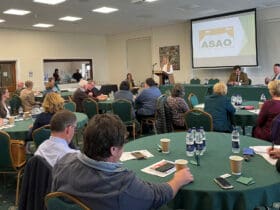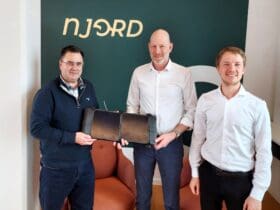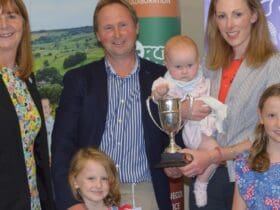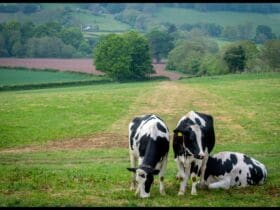Welsh farmers are renowned as some of the world’s experts at growing grass as a crop and many of them compete for the annual All Wales Grassland Management Competition.
This prestigious competition is organised by the Federation of Welsh Grassland Societies (FWGS), in conjunction with Royal Welsh Agricultural Society and sponsored by HSBC.
“The prolonged spell of dry weather prior to our visit, with most farms receiving negligible rainfall in the preceding 6 weeks, as well as the very testing wet winter and spring, meant that 2018 has proved to be exceedingly challenging to date and that the farms were not necessarily looking at their best.” Commented the team of judges
“On the other hand, as the saying goes, ‘when the going gets tough, ……’ and, as would be anticipated from farmers reaching this stage of the competition, contingency plans had already been effectively and seamlessly implemented in a timely manner in order to cope with almost unprecedented low levels of grass growth and the farms were a credit to all concerned.”
This year’s judges, technical expert, Dr Iwan Owen of Aberystwyth, HSBC Regional Agriculture Manager in Wales, Euryn Jones and last year’s runner up Mr David Thomas from Brecon, all agreed that this was a very strongly contested competition, however, the 2018 winner is confirmed as Mr Richard Rogers of Tre Ifan, Brynsiencyn, Anglesey
Richard and his small team of staff manage 350 dairy cows on a 90ha (225 acre) grazing platform – a stocking rate of 3.93 cows per hectare. In only their third season of milk production, they achieved an output of 20,945 litres of milk per hectare from the grazing platform in 2017 with 1.25 tonnes of concentrates fed per cow as a result of skilful management of the platform and strategic use of the neighbouring support unit.
The unit is part of a farm composed of three separate units that has been in a state of transition over the last few years with the sheep flock disbanded and an innovative and efficient grass based dairy bred beef system giving way to an additional dairy herd of 250 cows on another unit in 2018.
Tre Ifan is laid out to paddocks with an excellent network of tracks and water troughs. The pastures have largely been reseeded within the last 6 years with intermediate heading diploid and tetraploid perennial ryegrasses and white clover and the farm grew a very impressive 14.4 tonnes DM/ha in 2017 according to the computer software used as the basis of all grassland management decisions.
Fertility is considered to be a key to the system and, with an exceptional ‘empty’ rate of only 4.2% and 72% and 93% of the cows calved in the first three and six weeks respectively in 2017, Tre Ifan is now a LIC Monitor Farm for LIC New Zealand.
Grazing management has been particularly challenging in 2018 with grass growth rates ranging from a high in excess of 130kg DM/ha/day in late April to a low to date of 14kg DM/ha/day at the end of June but a combination of careful weekly measuring and timely responses have ensured that any knock-on effect has been minimised to date. A combination of wet autumn, winter and spring as well as dry summer conditions have tested the team to the full but innovative management decisions including the adoption of ‘on-off’ grazing and ‘pre-grazing mowing’ as conditions dictated have led to excellent results.
Nutrient management is based on regular soil sampling and appropriate use of a range of nitrogenous fertilisers and compounds based on price, season of application and crop requirements. The recent purchase of a trailing shoe slurry applicator has enabled slurry to be applied immediately after grazing, improving efficiency of use as a result of application during the growing season whilst avoiding grass rejection at the subsequent grazing.
Richard modestly says that ‘it has been a case of the right time, the right place and having the right people around us’ but this is far from the whole story. He has successfully built and maintained a young team of enthusiastic and capable individuals which has not been achieved by accident. Weekly team meetings to discuss plans and concerns, the establishment of a ‘WhatsApp’ group composed of all team members and routine budgeting and monitoring are all a part of what ensures everyone is informed and on-board.
The team have made excellent use of established practitioners in order to establish and develop the system and are members of two different Farmer Discussion Groups. Particularly noticeable has been their ability to learn from their own and other people’s mistakes, their flexible attitude and their unerring enthusiasm and drive to improve efficiency in every aspect of herd and grassland management.
Richard will receive his trophy on Tuesday 24 July at the Royal Welsh Show.







Leave a Reply
View Comments